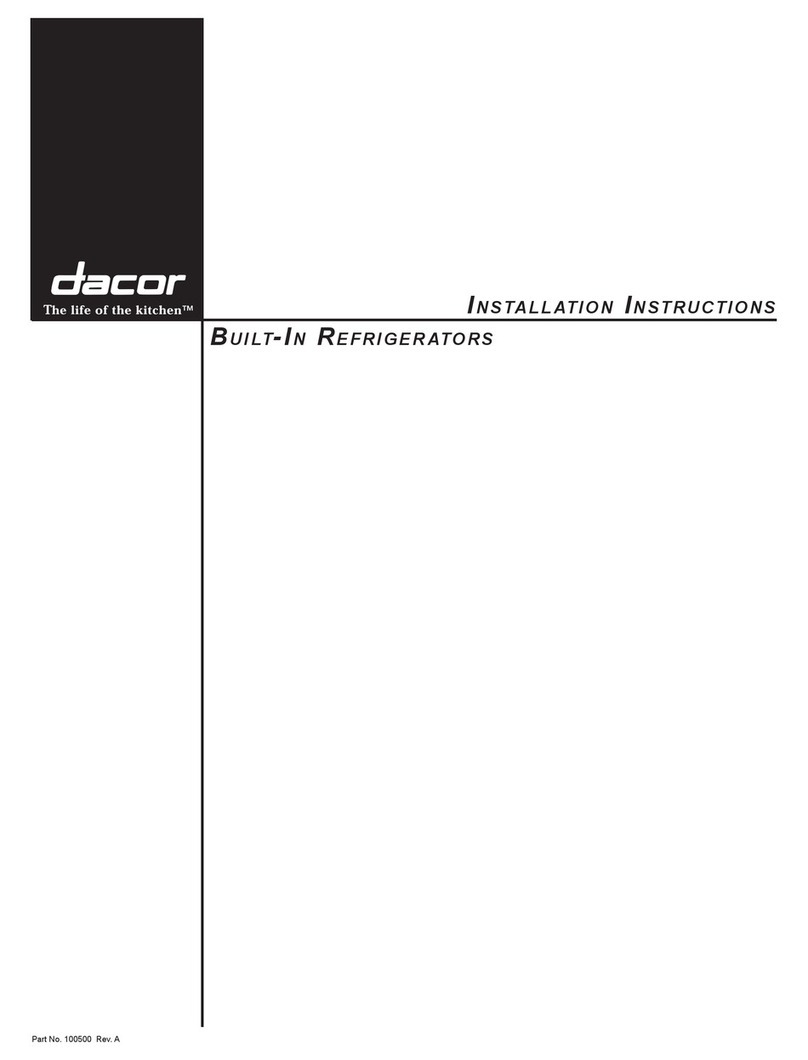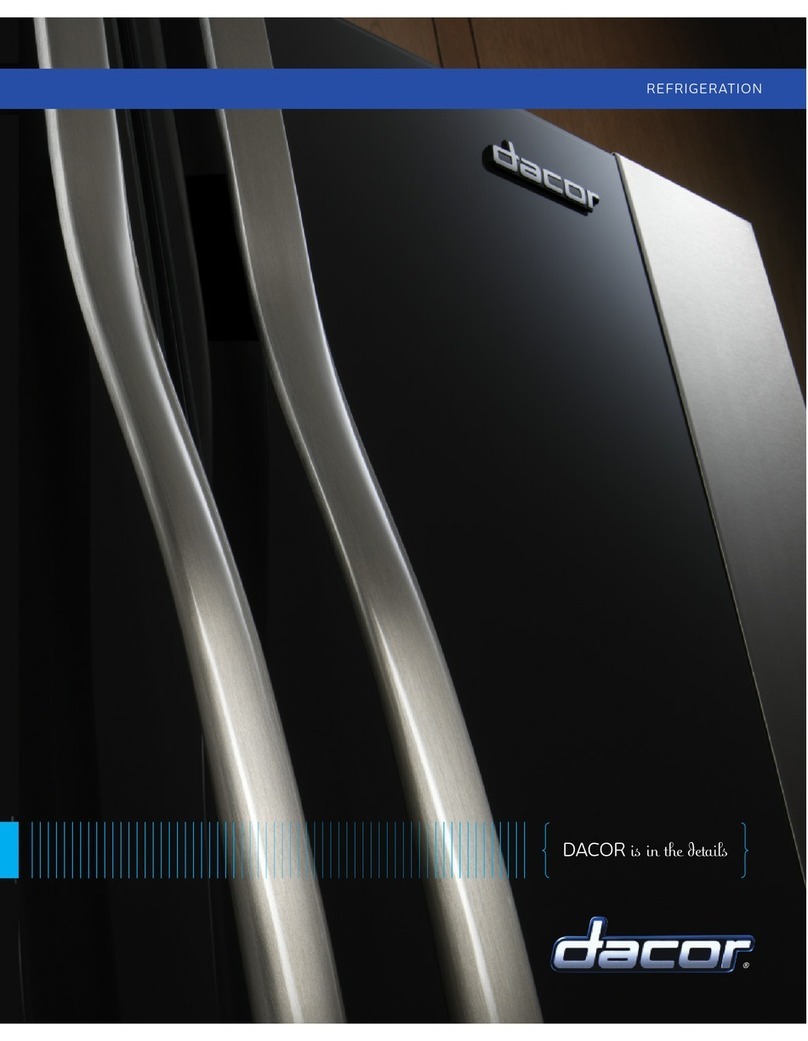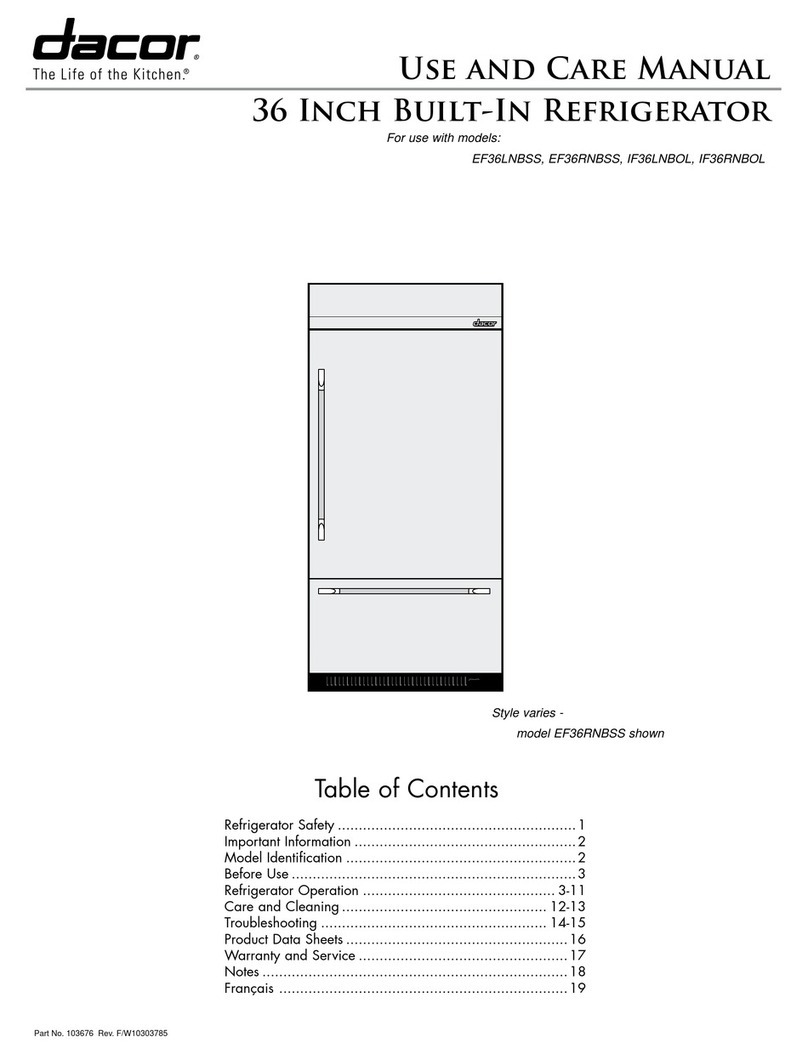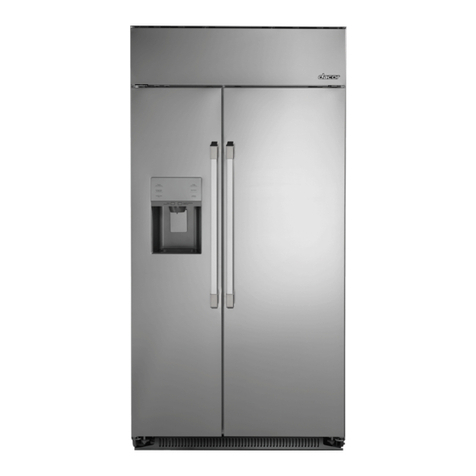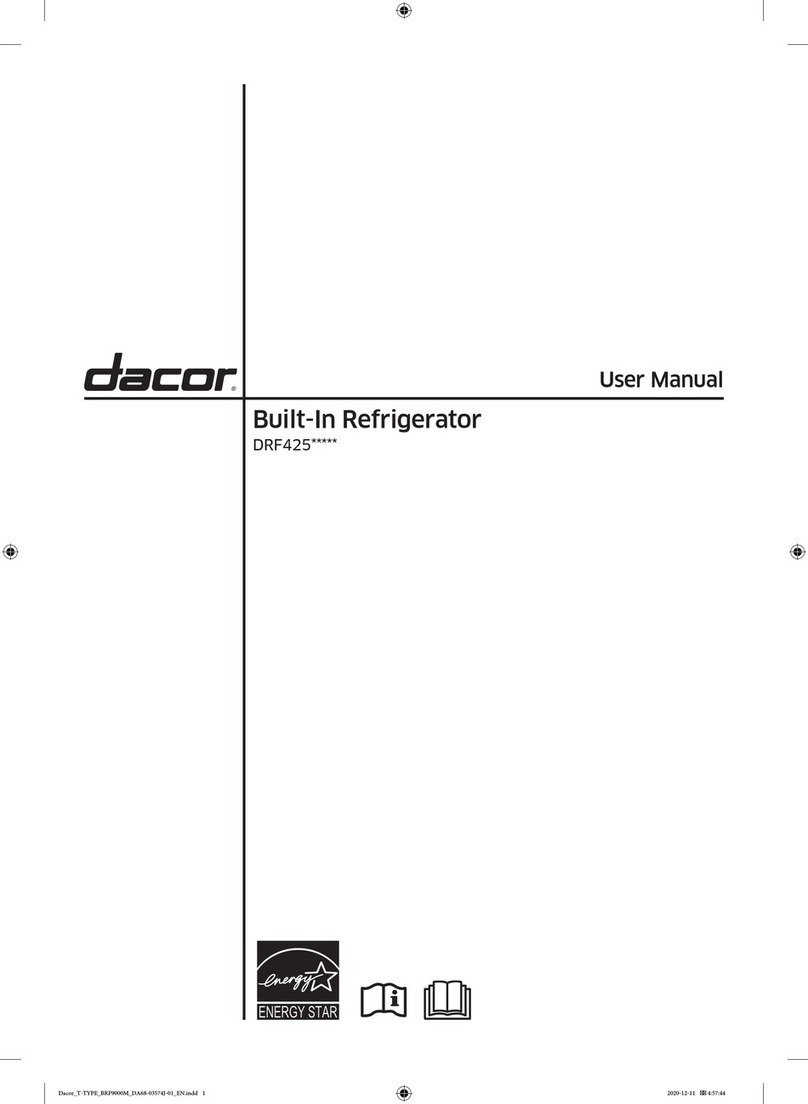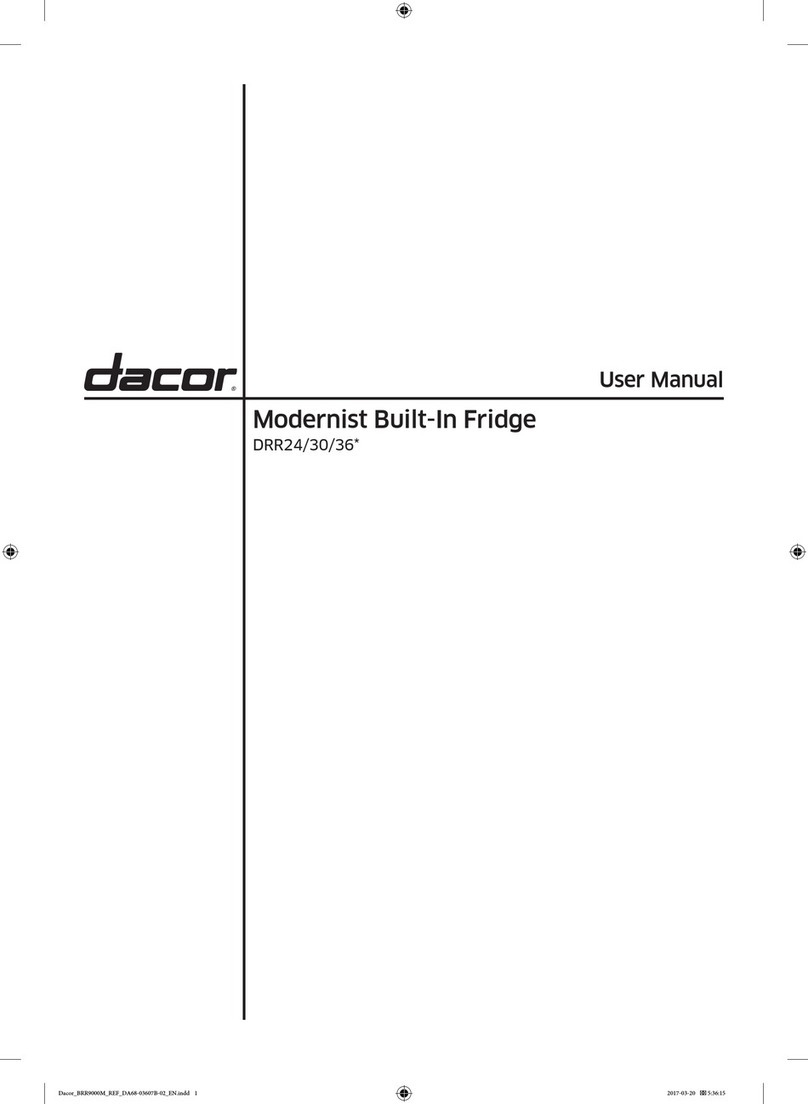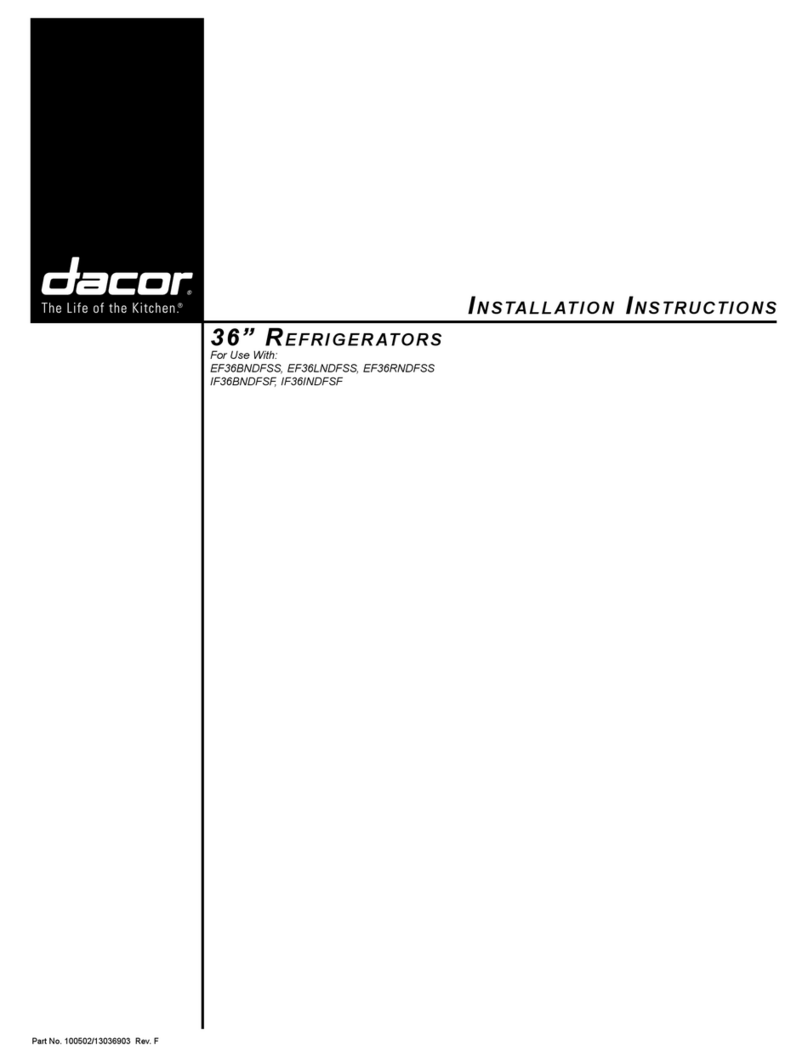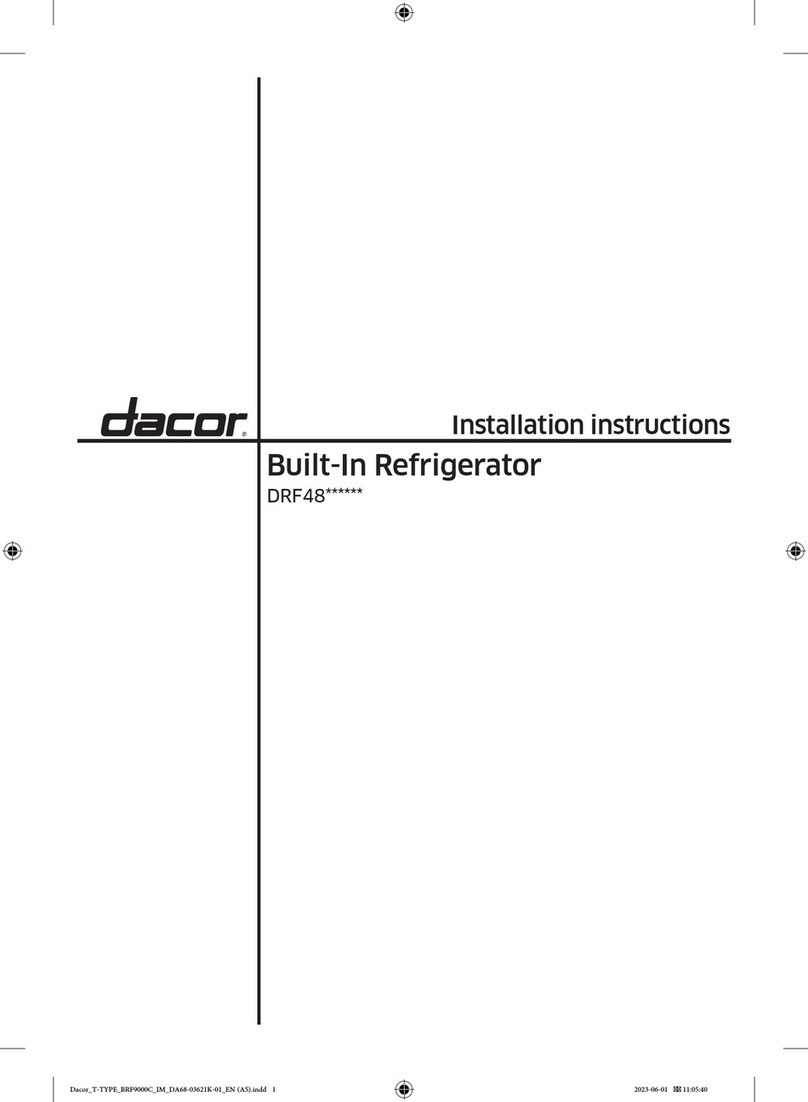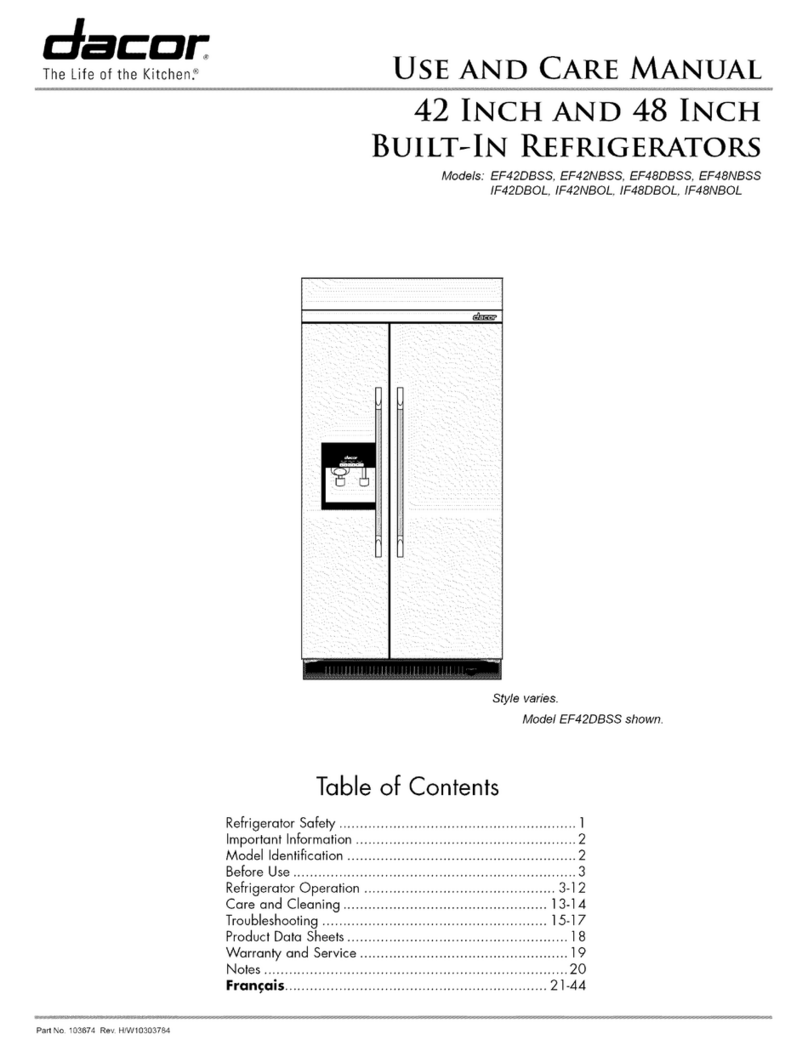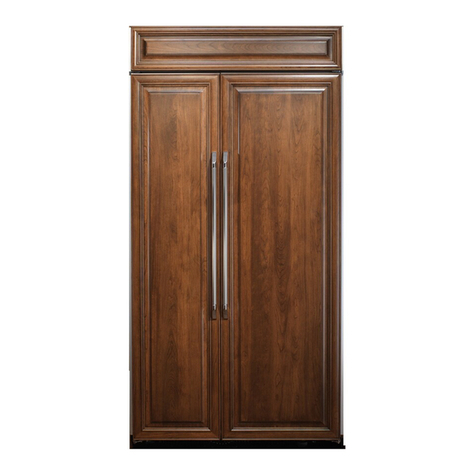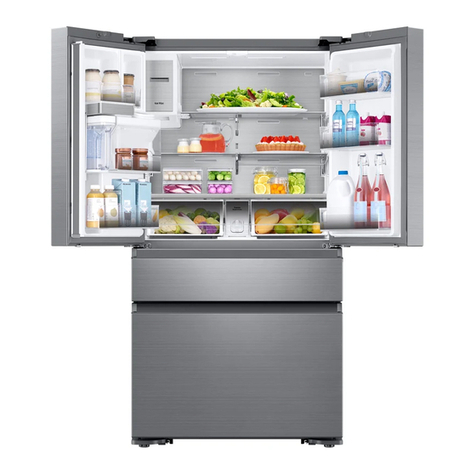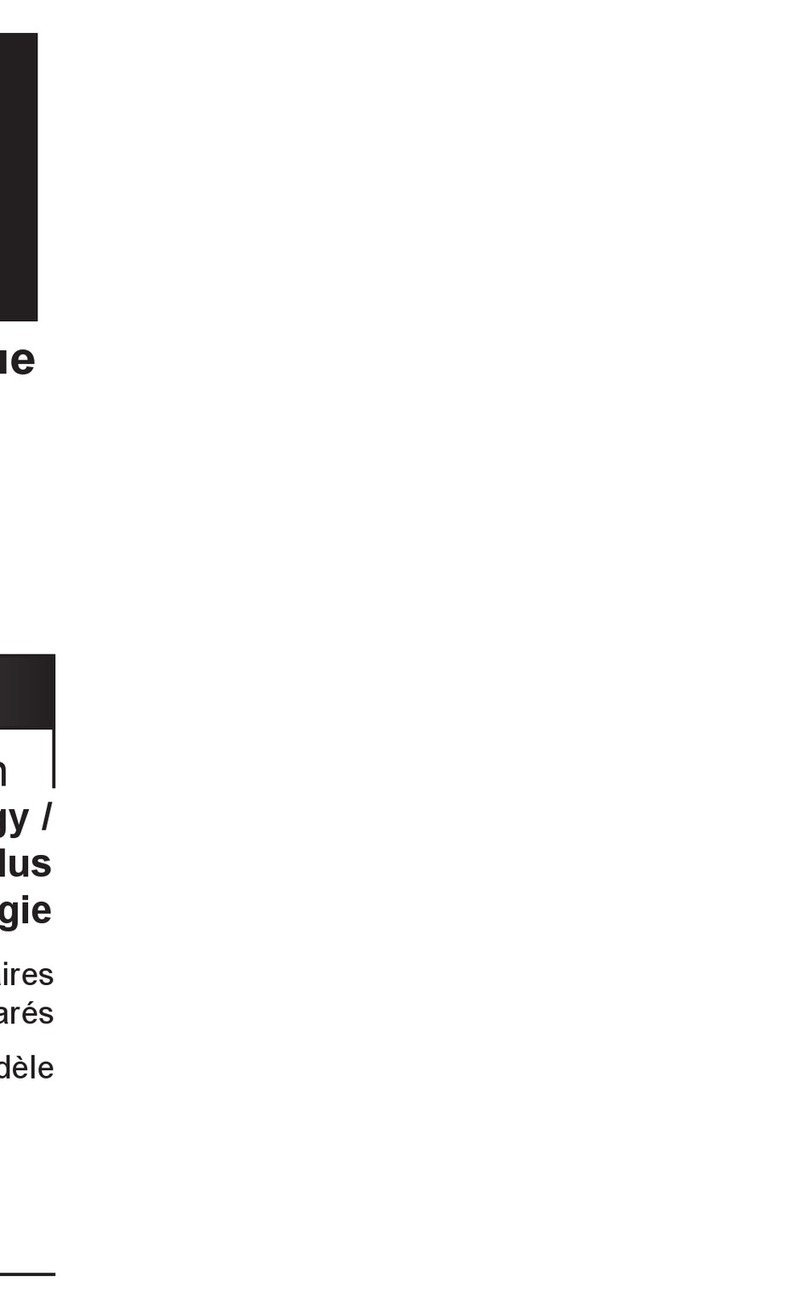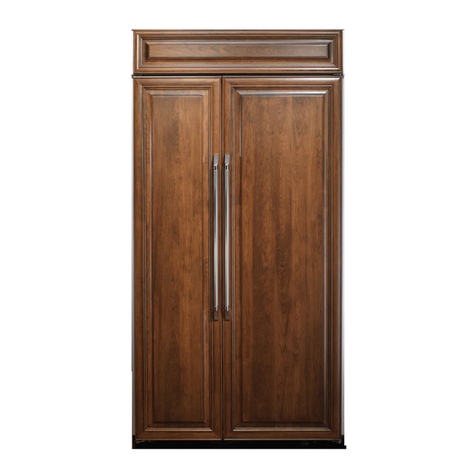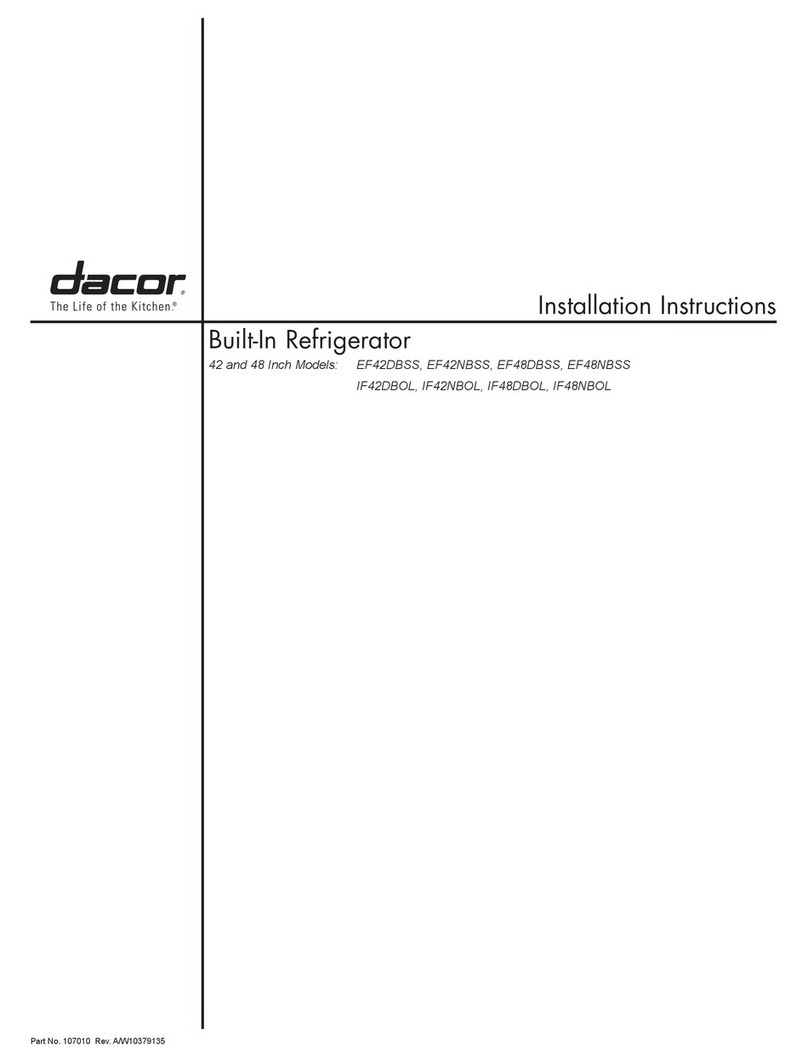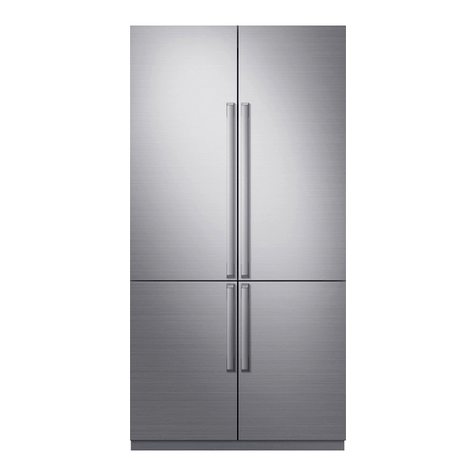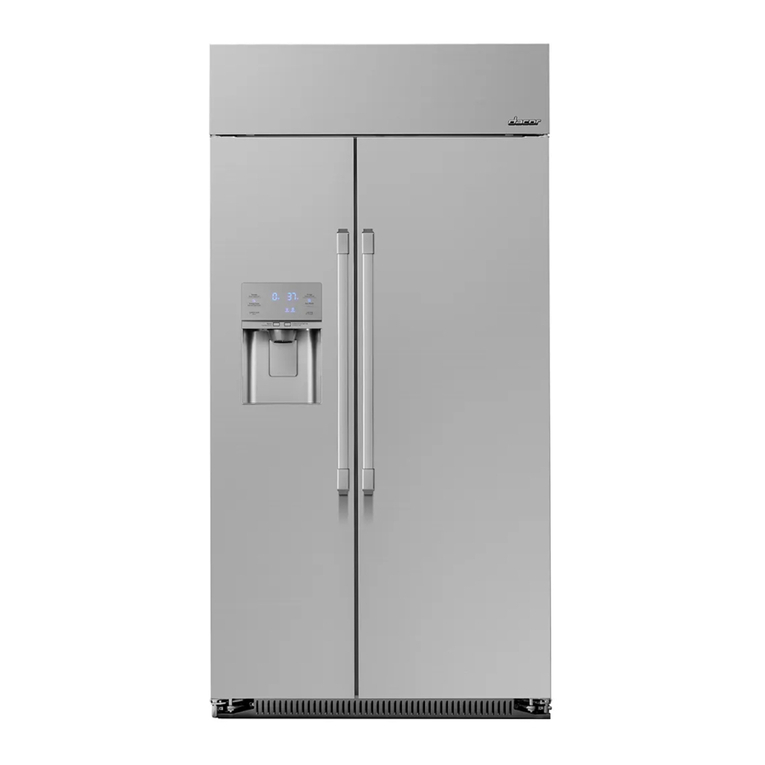
[mporta ation
Installer: Please leave this guide with this appliance.
Consumer: Please read and keep this use and care manual for
future reference. This guide provides proper use and maintenance
information. Keep this guide and the sales receipt and/
or cancelled check together for future reference. Proof of
original purchase date is needed for warranty service.
IMPORTANT: If you receive a damaged product, immediately
contact your dealer or builder, Do not install or use a damaged
appliance,
If you have any questions, call:
Dacor Customer Service
(800) 793-0093 (U.S.A. and Canada)
Monday -- Friday 6:00 A.M.to 5:00 P.M.Pacific Time
Web site: www.dacor.com
Have the complete model and serial number identification of your
refrigerator ready. These numbers are found on a serial number
label, located on the right side of the refrigerator liner. Record
these numbers on this page for easy access.
Model number
Serial number
Date dpurchase
For service and warranty information, see page 13.
Since Dacor constantly improves the quality and performance of
our products, we may need to make changes to the appliance
without revising this manual.
Visit www.dacor.com to download the latest version of this
manual.
Remove the Packagi ng
[] Remove tape and glue residue from surfaces before turning on
the refrigerator. Rub a small amount of liquid dish soap over
the adhesive with your fingers. Wipe with warm water and dry.
[] Do not use sharp instruments, rubbing alcohol, flammable
fluids or abrasive cleaners to remove tape or glue. These
products can damage the surface of your refrigerator. For
more information, see Refrigerator Safety section.
[] Dispose of/recycle all packaging materials.
Clean Before Using
After you remove all of the packaging materials, clean the inside
of your refrigerator before using it. See the cleaning instructions in
the Care and Cleaning section.
Important information to know about glass shelves and
covers:
Do not clean glass shelves or covers with warm water when
they are cold. Shelves and covers may break if exposed to
sudden temperature changes or impact, such as bumping.
Tempered glass is designed to shatter into many small,
pebble-size pieces. This is normal. Glass shelves and covers
are heavy. Use both hands when removing them to avoid
dropping.
Water Su p!y,,, Requirements
Read all directions before you begin.
IMPORTANT:
[] When your refrigerator was installed, the water connection
from the water source should have been connected to
your refrigerator. If your refrigerator is not connected to a
water source, see Connect Water Supply in the installation
instructions. If you have any questions about your water
connection, see the Troubleshooting section or call a licensed,
qualified plumber.
[] Ifyou turn the refrigerator on before the water line is
connected, turn the ice maker OFF. See Ice Maker and
Storage Bin on page 6.
Water Pressure
A cold water supply with water pressure between 30 and 120 psi
(207 and 827 kPa) is required to operate the water dispenser and
ice maker. If you have questions about your water pressure, see
the Troubleshooting section or call a licensed, qualified plumber.
Reverse Osmosis Water Supply
IMPORTANT: The pressure of the water supply coming out of
a reverse osmosis system going to the water inlet valve of the
refrigerator needs to be between 30 and 120 psi (207 and 827
kPa).
If a reverse osmosis water filtration system is connected to your
cold water supply, the water pressure to the reverse osmosis
system needs to be a minimum d40 psi (276 kPa).
If the water pressure to the reverse osmosis system is less than
40 psi (276 kPa):
[] Check to see whether the sediment filter in the reverse
osmosis system is blocked. Replace the filter if necessary.
[] Allow the storage tank on the reverse osmosis system to refill
after heavy usage.
[] If your refrigerator has a water filter, it may further reduce
the water pressure when used in conjunction with a reverse
osmosis system. Remove the water filter. See the Using the
Dispenser without the Water Filter on page 11.
If you have questions about your water pressure, call a licensed,
qualified plumber.
[] All installations must meet local plumbing code requirements.

